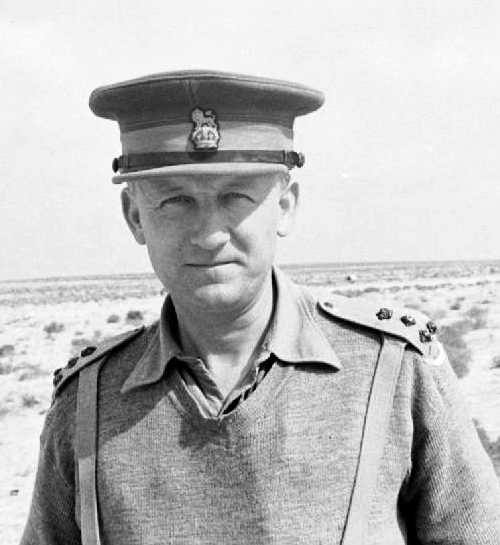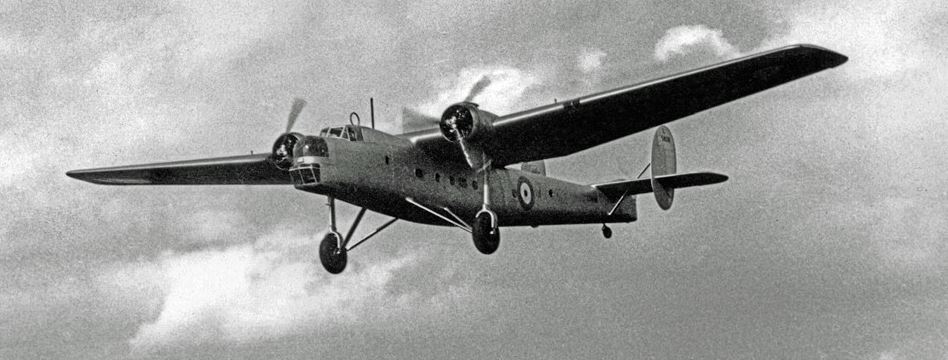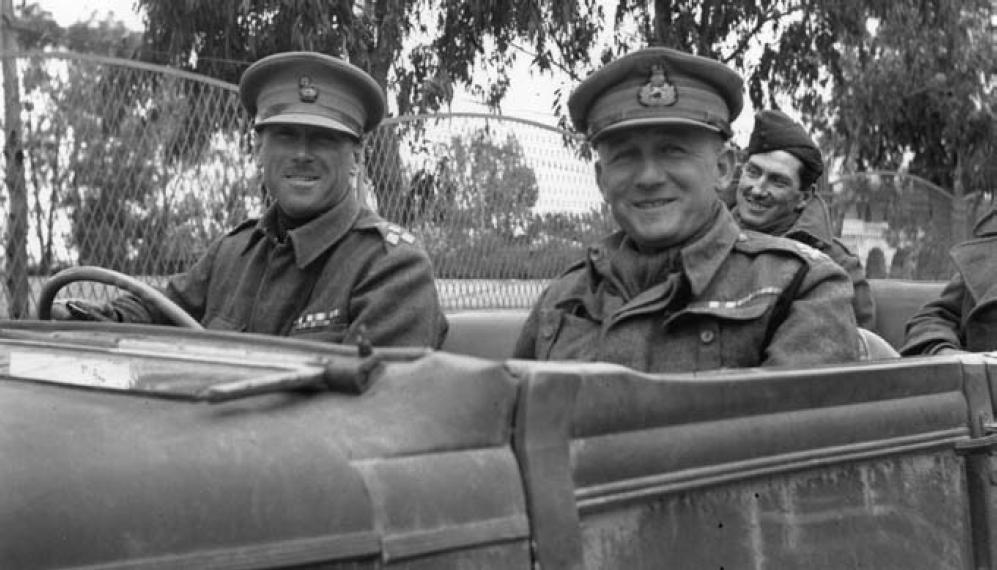Espionage or rotten luck, the death of General Gott
Although General Gott served Britain in both the First and Second World Wars, he came to prominence by way of his death. After 2 years in North Africa from 1940 to 1942, fighting first the Italians and then the Germans commanded by the German General Rommel , he was appointed by Churchill to command all British Forces in Africa.
His predecessor was General Auchinleck whom Churchill felt was not aggressive enough. At the time the excuse given was that the “Auch” was being withdrawn to organise Britain’s defences against a potential invasion by Germany. The real reason was Churchill’s lack of faith in the Auch, hence the appointment of General Gott who was very popular with his men. They called him by his nickname “the Strafer”.
He was in his tented Headquarters camp, just 50 miles from El Alemein when he received the news from Churchill and he wanted to get to the battle area as quickly as possible to take overall command of his troops. He told his Staff to get him to El Alemein by aircraft if necessary and since there was an aircraft on the runway alongside his camp, he told his Staff to get it ready. In fact the RAF plane was waiting to take off but was delayed so that General Gott could efficiently hand over his old job to another new successor.

The RAF Bristol Bombay aircraft had stood in the searing heat of the desert for some hours already and the engine temperatures were rising to danger point. The Pilot, Sergeant Jimmy James, was both anxious and unhappy at the delay but he had no choice but to wait for the General from 9am to 3pm. He dutifully obeyed orders and eventually the General and a number of wounded soldiers were helped into the aircraft. The soldiers were all on stretchers and there were no seats for the General and his Staff. The Bombay was loaded with Stores of Food, Ammunition and Mail. They all had to sit or lay among the various boxes of Stores.
The take-off was a struggle for the twin engine Bombay but eventually Sgt James got the plane up to around 50ft and he set course for El Alemein. James warned his Canadian co-pilot to watch the engine temperature gauges very carefully as he slowly climbed into the cooler air.
Jimmy was still only 19 years old. He was from a coal mining village in South Wales and he managed to get into the RAF aged 17 by lying about his age. He gained his Pilot’s Wings with an above average score in his exams and was quickly posted to the Middle East where he joined 216 Transport Squadron. The flying was exciting but also dangerous. The Bristol Bombay was popular among the troops because among other Stores it always brought the Mail from home. By June 1942 he was made up to captain of his own aircraft. His Squadron was always very busy and Jimmy constantly moved around the desert delivering to the troops. He loved the job , carrying out his “Dream come True”.
However, on that baking afternoon of the 7th August 1942, events took a serious turn for the worst. He was still flying at just above 50ft when suddenly there was a loud bang and his starboard engine stopped working. He shouted at the 2nd Pilot, who shouted back “it’s not me, look at the cannon shells”. The Bombay was being attacked by a number of ME 109’s who were determined to force Jimmy’s plane to crash land. Jimmy searched for a place to land in the desert but then the port engine also stopped completely.
In spite of the situation being desperate he managed to glide the plane up to around 120ft. The cockpit filled with smoke and in an instant Jimmy knew that he had to suddenly grow up from being a naïve youth into an aggressive man. He shouted to the 2nd Pilot to get the Medical Orderly from the back of the plane. Two ME109’s flew past his wing, then another opened fire with tracer cannon shells. This time his main fuel tanks were hit and fuel poured into the aircraft between the cockpit and the passenger area. The 2nd Pilot was wounded but managed to get through the flames and smoke with the Medical Orderly. Jimmy said “Get all the wounded off the stretcher hooks and lie them on the floor”.
At that time no passengers were injured and Jimmy was merely gliding the heavy old Bombay down gradually so they touched down quite gently. Although the two front wheels were on the ground he couldn’t use his brakes without the plane turning over. The plane continued to rumble over the desert surface. Gradually the tail came down and touched the surface but then the brakes would not work. Jimmy steered the aircraft down a long decline. When his speed slowed down to around 40mph, he told his 2nd Pilot to standby to evacuate. “Get the door off and make sure that it is off it’s hinges”. By now Jimmy was badly injured; His face and hands were burnt and his lungs were full of smoke.

Through his windscreen he could see the ME109’s turning to attack once again. He had expected the enemy planes to disappear after shooting the Bombay down. He told the 2nd Pilot to open the escape hatch in the cockpit floor. Through the doorway into the passenger area, Jimmy saw that the passengers were all OK. Speed was now around 20mph. He moved in his seat and, as he did so, the ME109’s came back with their second attack. Bullets and cannon shells tore into the cockpit. Flames were everywhere—even his boots were on fire. The plane had finally halted but Jimmy could not get back to the passenger area because of the flames. A fuel explosion blew Jimmy back into the cockpit. He crawled out through the escape hatch and under the blazing aircraft.
He struggled round to the back of the plane hoping to see 21 people there but instead there were just 4. The entire aircraft was now a ball of fire. The General and the wounded were all trapped in the blazing inferno. Jimmy made up his mind to go for help, leaving the few survivors to stay near the plane. After hobbling around 3 miles he stumbled across a Bedouin who strapped him to his camel and they came across a British Army truck that was being tested by an RASC Team who took him to their camp. He insisted on going back with the Medical Rescue Team because “only he knew the way”.
Eventually they spotted a column of smoke and they had found the 4 survivors. Jimmy was in hospital for 4 months but he recovered and was awarded the DFM Medal after he had returned to duty. He told his story but was hardly believed.
Sixty years later, Jimmy read a book by a German Pilot on ‘fighter tactics’. The author was Emile Clade who recalled shooting down the Bombay aircraft exactly as Jimmy had remembered. Later Jimmy met up with Clade in Bonn, Germany. Emile then told Jimmy that when the ME109’s landed back at base after the event, their Commander told them “congratulations, you have just killed General Gott, the new chief of the Eighth Army”.
It can only be via German Spies in the British Headquarters that they knew:-
- That General Gott was on board the Bombay
- What time the Bombay took off
- Where it was headed
- That they must make it a total burned out wreck
- There should be hardly any survivors
Immediately after General Gott was killed, his successor, General Montgomery was appointed. ‘Monty’ defeated Rommel at El Alemein and it is impossible to discover what portion of Gott’s Plans were used by Monty in his victory.
